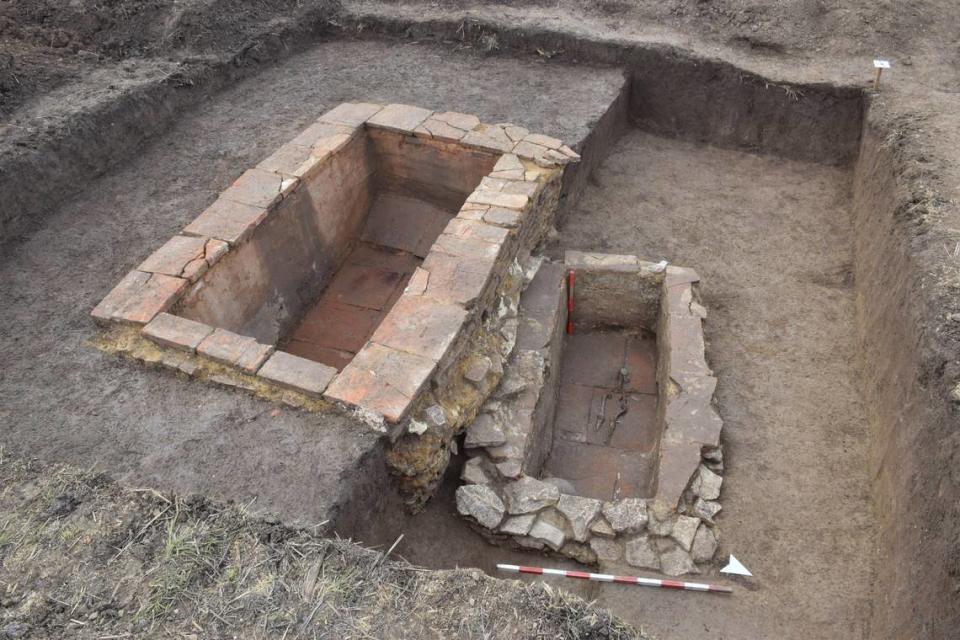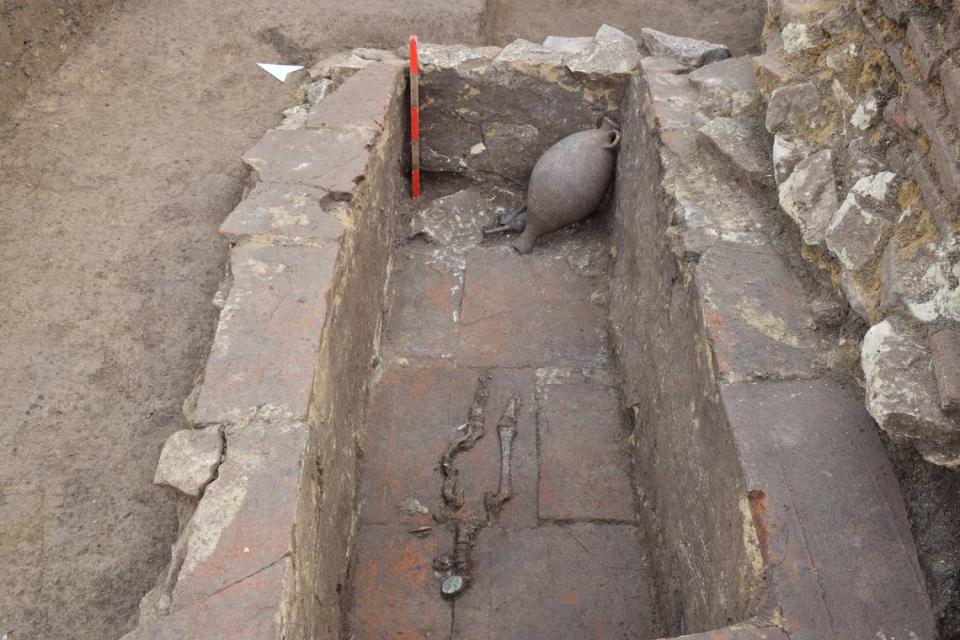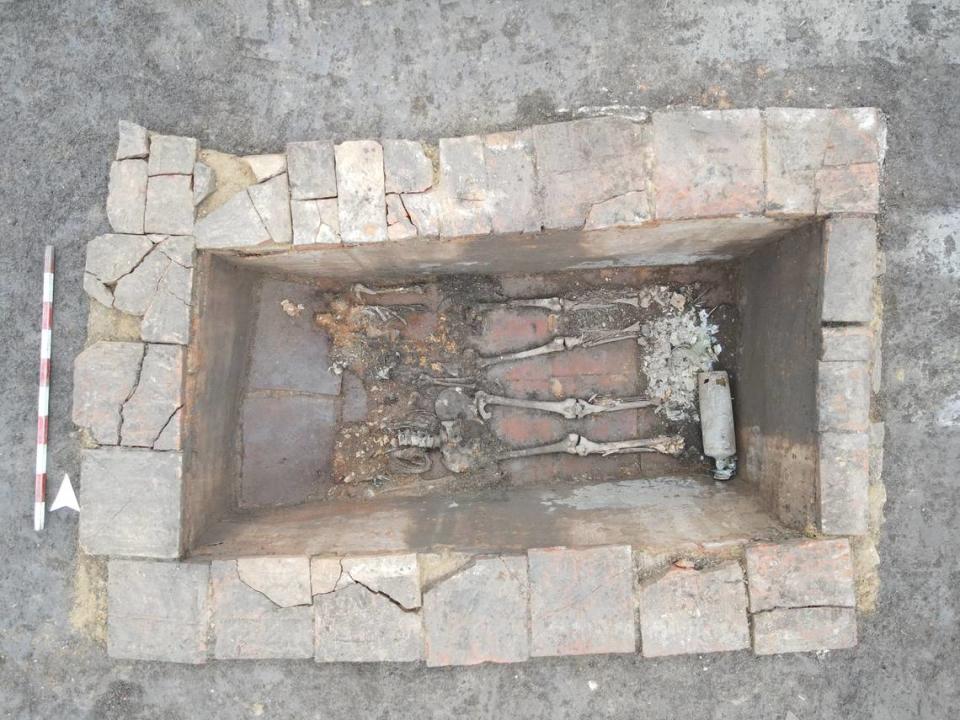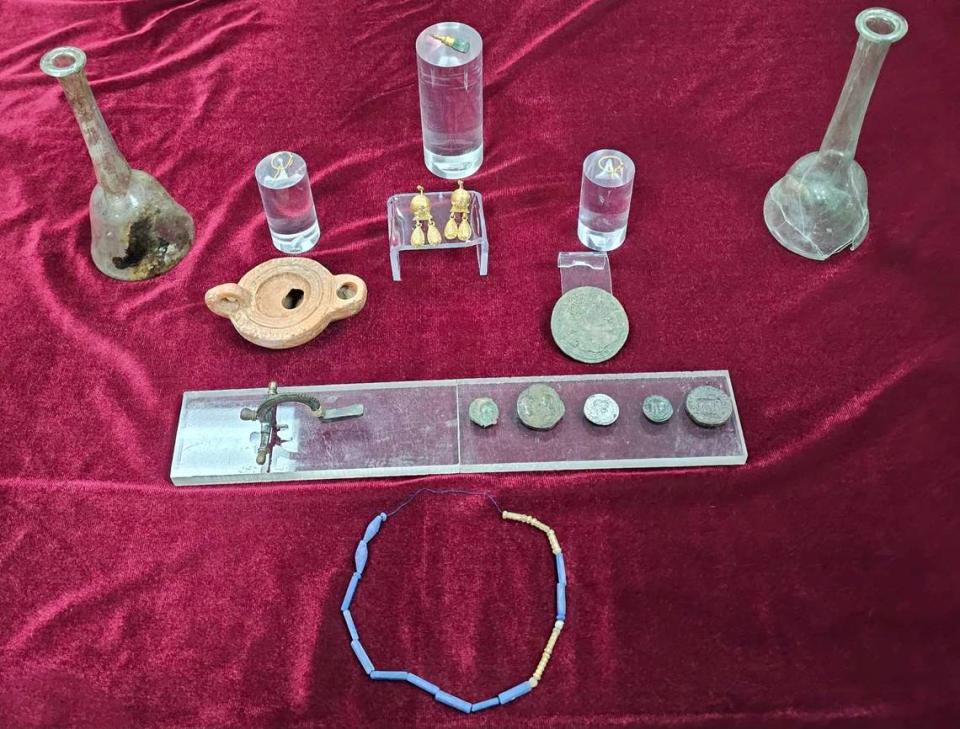Tractor driver hits stone — and opens 1,700-year-old Roman tomb in Bulgaria. See it
While plowing his field in Bulgaria, a farmer hit a large stone with his tractor. He stopped to check the area and discovered some exposed human bones.
The farmer in Nova Varbovka reported the remains to police who brought an archaeologist with them to investigate, Kalin Chakarov, an archaeologist with the Veliko Tarnovo Regional Museum of History, told McClatchy News in a Feb. 12 email.
Archaeologists looked at the farmer’s find and realized he’d opened an ancient Roman tomb.

Uncover more archaeological finds
What are we learning about the past? Here are three of our most eye-catching archaeology stories from the past week.
→ Mysterious ruins found hidden in courtyard of 500-year-old castle in Norway. See them
→ Viking ruins hid beneath farmland for at least 900 years. Now, experts have found them
→'Incredibly rare' ancient Roman bed uncovered in London. See the 'extraordinary' find
Excavations of the field unearthed a second stone tomb. The “huge graves” were “built with bricks, stones and mortar,” then “covered with huge limestone slabs,” Chakarov said.
Photos show the side-by-side ancient graves.

Inside the smaller grave, archaeologists found the bones of a toddler, some gold earrings, a necklace, coins and a “very rare” medallion with a depiction of a Roman emperor, Chakarov said.

In the larger roughly 10-foot-long grave, archaeologists uncovered the remains of a man and woman who died between the ages of 45 and 60, Chakarov said. The pair were buried with coins, gold earrings, glass bottles, a lamp and a necklace. A photo shows a few of these artifacts.

The burials most likely belong to a family, Chakarov said. “First a child died and later his parents were buried (in) the same place but in a different grave.”
The ancient Roman tombs are about 1,700 years old and date to 200 to 250 A.D., the Veliko Tarnovo Regional Museum of History said in a Jan. 31 news release.

Based on the tombs and the treasures within, the deceased were likely wealthy landowners or high-ranking residents, the museum said.
The field in Nova Varbovka was excavated in December. Archaeologists have not yet analyzed DNA from the skeletons but hope to soon.
Nova Varbovka, sometimes translated as Nova Vrbovka, is about 130 miles northeast of Sofia, Bulgaria’s capital city.
Google Translate was used to translate the news releases from the Veliko Tarnovo Regional Museum of History.
Ancient Egyptian woman had holes on her bones. Experts say it’s rare case of disease
3,600-year-old red lipstick — the oldest ever found — discovered in Iran, study says
1,900-year-old bone — filled with hallucinogenic seeds — is ‘rare’ find. What’s it for?

